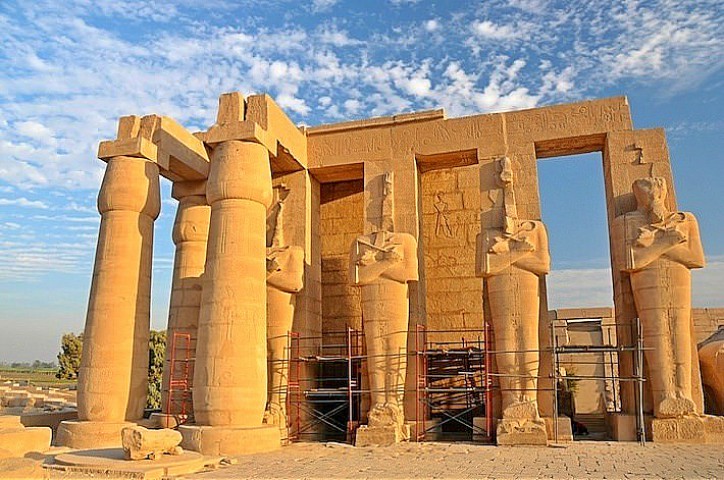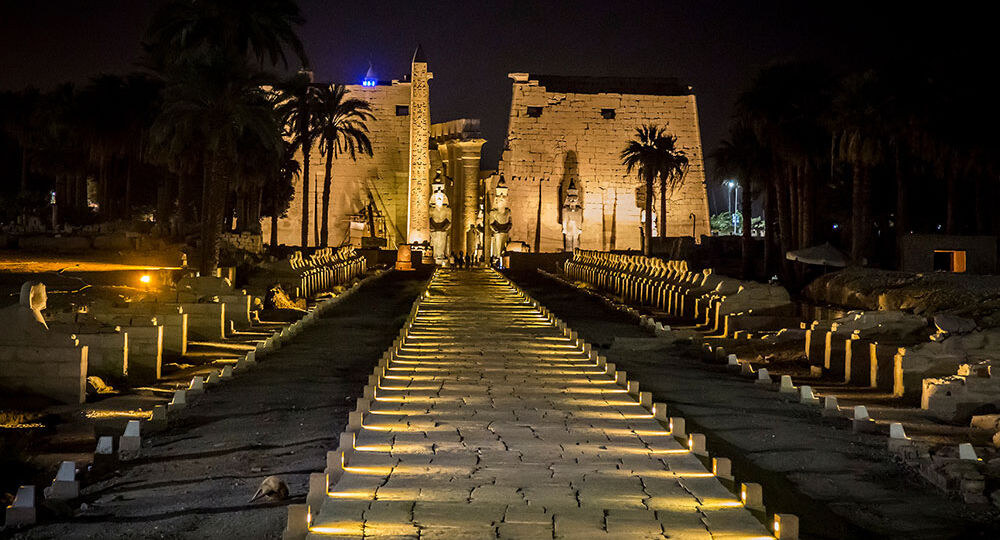
Luxor is often called the world’s greatest open-air museum, but that comes nowhere near describing this extraordinary place. Nothing in the world compares to the scale and grandeur of the monuments that have survived from ancient Thebes.
The modern city sprawls to the site of the Ancient Egyptian city of Waset, also known as Nut and to the Greeks as Thebes or Diospolis, Luxor has frequently been characterized as the “world’s greatest open-air museum”, as the ruins of the temple complexes at Karnak and Luxor stand within the modern city. Immediately opposite, across the River Nile, lie the monuments, temples and tombs of the west bank Necropolis, which includes the Valley of the Kings and Valley of the Queens.
Discover Luxor
Luxor Temple
One of the best things to visit in Egypt. And there is a good reason why. The temple lies on the east bank of Nile River and stands near the ruins of Thebes. It was constructed at some point in 1400 BC and is one of the most popular tourist attractions in all of Egypt. The temple is made from sandstone from the Gebel el-Silsila area. For these reasons, it is also referred to as “Nubian Sandstone”.
Four of the leading temples of Luxor include the Temple of Seti I at Gurnah, the Temple of Ramses III at Medinet Habu, the Temple of Hatshepsut at Deir el-Bahri and the Temple of Ramses II. Unlike other ancient Egyptian temples, the ones at Luxor are not dedicated to deities and Pharaohs. Instead, these temples were built to commemorate the “Rejuvenation of Kingship”- i.e. a ceremonial place where new Kings and Queens were crowned. Earliest records also indicate that Alexander the Great may have also been crowned at Luxor, although the notion remains debatable.
Much of the Luxor Temple was built under Amenhotep III. Some of these temples were refortified and rebuilt under the Roman era.
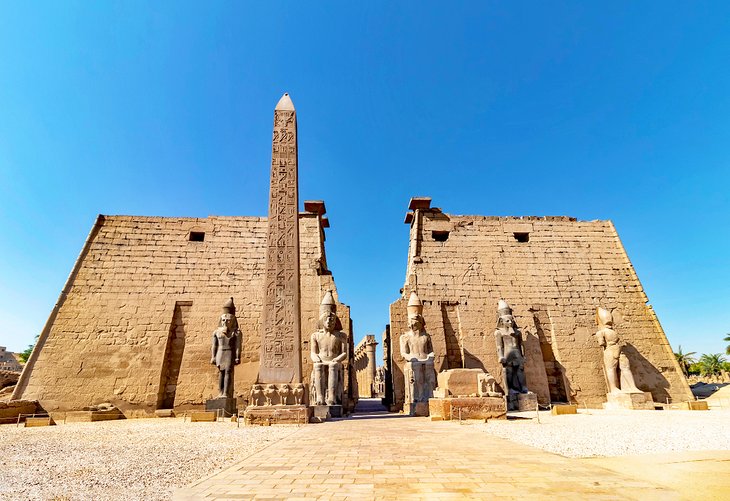
Karnak Temple
Karnak refers to an entire Temple Complex that contains a list of decayed temples, pylons and chapels from the ancient Egyptian era.
The first temple was constructed during the reign of Senusret I of the Middle Kingdom that continued till the end of Ptolemaic period. The area falls within Thebes’s administration and is partially surrounded by the El-Karnak Village. The whole area (along with the ruins of Thebes) has been classified as a World Heritage Site and is frequently visited by tourists, archeologists and Egyptologists alike. Karnak now serves as an open-air museum and is the second largest religious site in the world, after the famous Angkor Wat Temple in Cambodia. It is also the second most significant historical landmark of Egypt, after the Giza Pyramids. The entire temple complex is dedicated to Amun-Re, who was the main deity of the Theban Triad during the 12th Century BC. A figure of Pinedjam-I stands 10.5 meters tall and is made from sandstone.
Karnak also has the largest of all obelisks, which weighs around 328 tons and stands over 29 meters tall. Much of these temples have corroded over the years. The remnants, however, still make a popular tourism activity and are often on the bucket list of all those traveling to Egypt.
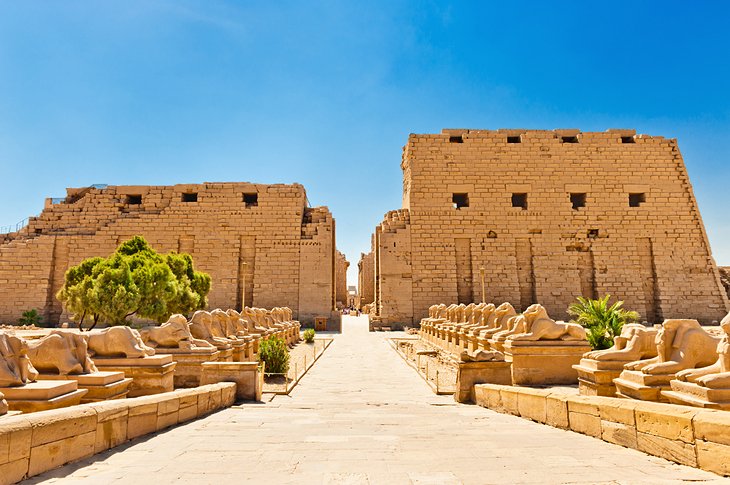
Medinet Habu
Madinet Habu is a renowned archeological site and tourist attraction of Egypt. It is located on the West Bank of Luxor city. It spreads over the foothills of the Theban gorge and overlooks the Nile River.
Although there are several important archeological sites in the surroundings, Madinet Habu is named after the famous Mortuary Temple of Ramesses III. The temple is the most well-preserved historical landmark of Egypt. It dates back to the 18th Dynasty and was constructed by both Hatshepsut and Thutmose III. It underwent several structural alterations and renovations over the years – particularly during the 25th-30th Dynasties and the Greek-Roman period. The structure is made from massive mud-bricks. The entrance to the temple is made from a large fortified gatehouse, which resembles a traditional Asiatic fortress.
Outside the large enclosure, there are smaller chapels belonging to Amenirdis I, Nitiqret and Shepenupet II. Two colossal statues of Ramesses III and the god Osiris rest on one side of the entrance, along with several un-carved columns on the other end. A second pylon leads to a large hall, which features several wall carvings and hieroglyphs of the Pharaoh himself. During the Coptic era, a small church was also constructed in Madinet Habu. However, it was relocated elsewhere during the late 17th Century AD.
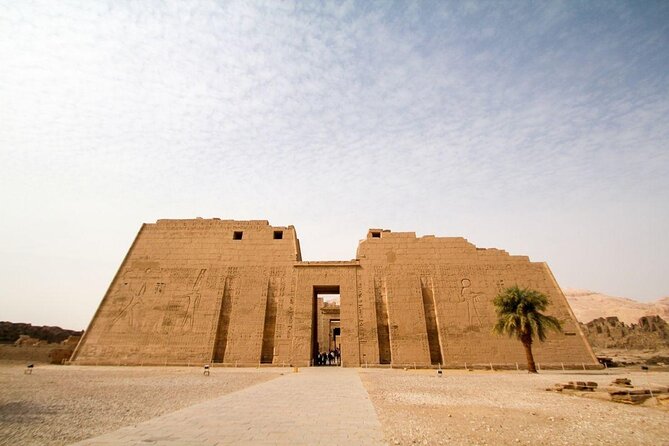
Colossi of Memnon
Colossi of Memnon refer to two large statues located near the Theban Necropolis, near the modern city of Luxor (Egypt). These statutes are presumed to represent the ancient Pharaoh Amenhotep III, who ruled Egypt during the Dynasty XVII (1350 BC).
The twin statues are designed in a seated position, with their hands resting on their knees. Their faces are gazing towards the east (River Nile). Two shorter figures are also carved along the sides of these statues to represent Mutemwiya (Pharaoh’s mother) and Tiy (Pharaoh’s wife). Despite the fact that the Colossi were built in honor of the Pharaoh, they were named after Memnon – an Ethiopian King who was slain by Achilles. Legend has it that in 27 BC, a large earthquake destroyed the northern end of the colossi.
The remaining lower half produced a “melody” that could usually be heard at dawn. Memnon was said to be the son of Eos – the goddess of dawn. This “Vocal Memnon” was considered to bring luck to whosoever heard it, and it was Memnon who was the first to hear it. Following the musical myth, Theban Necropolis became known as Memnonium. Colossi of Memnon not only became a popular cultural icon (as depicted in Oscar Wilde’s “The Happy Prince”) but are also a major tourist attraction of Egypt.
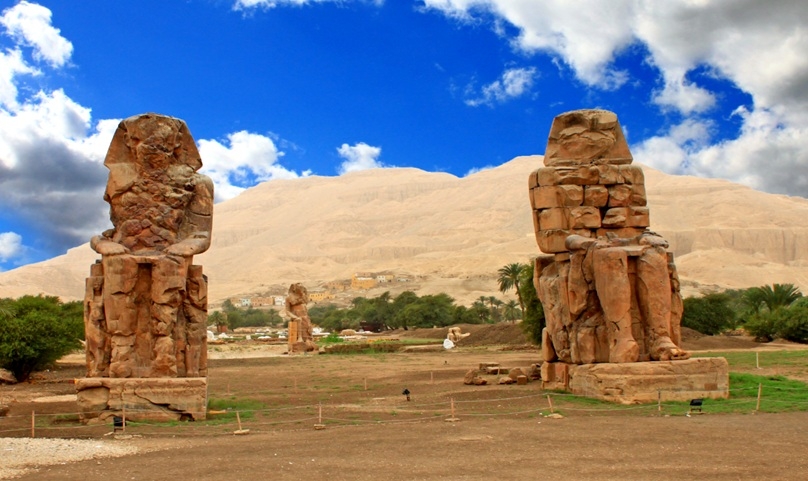
Valley of the Kings
Valley of the Kings has long been one of the oldest Necropolis of Egypt. As the name implies, this valley was used as a burial ground: where the tombs of ancient Egyptian Pharaohs and other ruling elites were constructed, during the 11th Century BC.
The valley spreads over the west bank of the Nile, opposite Thebes (now Luxor) and is the epicenter of the Theban Necropolis. The valley consists of two distinct regions: The East Valley and the West Valley. The whole area has been subjected to various archaeological expeditions. Since the 18th Century, several new tombs have also been unearthed. This includes the famous Tomb of Tutankhamen. In 1979, the area was declared a World Heritage Site. Most of the tombs in the Valley have graffiti and ancient carvings scribbled on them. These denote the Pharaoh or any other individual resting inside. A few of these tombs are open to public viewing (for tourists).
Valley of the Kings is one of the most popular tourism hubs of Egypt. The East Valley is more frequently visited because of its terrain and considerable shielding from flash floods. A Nile cruise is all that you need to make your trip worth it.
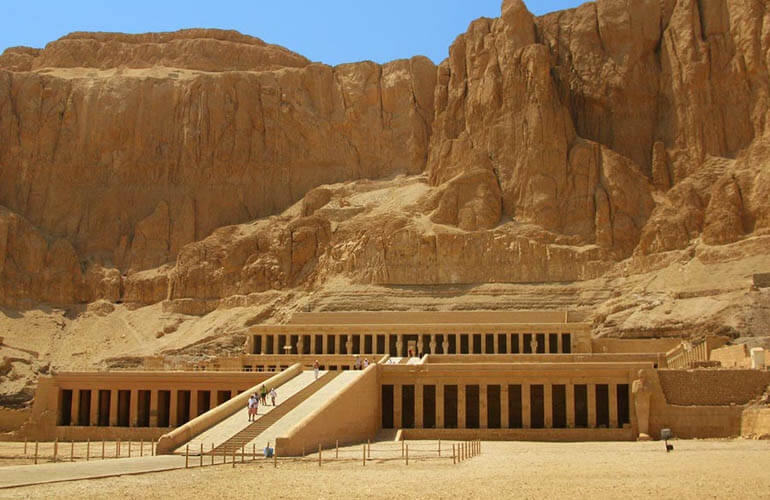
Valley of the Queens
The Valley of the Queens is an ancient Egyptian site during the time of the Pharos in Egypt. In this place, the wives of the Pharos were buried after pompous ceremonies. Inscriptions written on the pillars reveal that locals called the area as Ta-Set-Neferu, which literally translates into ‘the place of beauty’. Most of the tombs are located in the main Wadi that contains about 91 tombs. Other tombs are located in subsidiary valleys including the Valley of the Rope, the Valley of Prince Ahmose, the Valley of the Dolmen, and the Valley of the Three Pits. All of these valleys date back to the 18th dynasty that spanned from 1550 BC to 1292 BC. The Valley of the Queens in Egypt is aptly located near the Valley of the Kings. Also, to be found nearby is the Deir el-Medina that once housed the tomb’s workers secluded from other settlements due to the assumed sacredness of their tasks. A sacred cave or grotto is situated at the entrance of the Valley that was associated with reincarnation of the dead in ancient times. Visitors can learn a lot about the cultural legacy of ancient Egyptian dynasty that had once been the most advanced civilization on Earth.

Ramesseum
Ramesseum was a memorial temple built by an Egyptian pharaoh named Ramses II. It is located in upper Egypt in the Theban necropolis not far from the modern city of Luxor. The name of the place was coined by a French scholar Jean-François Champollion after he had read Ramses’ title and name written in the hieroglyphs along the walls. Diodorus Siculu, a Greek historian, had described in detail about the temple during the 1st century BC. Ramses II had usurped, modified, and constructed many buildings during his reign. This included the site that is now known as Ramesseum. The entire complex was surrounded by mud brick walls. The temple consisted of two stone gateways that lead to a courtyard. Visitors can view fragments of a 57-foot seated statue of Ramses II at the site. They can also view scenes of various battles in which Ramses took part depicted on the walls. Also located on the site are the shattered remains of the colossus of Ramses that had inspired an English poet named Percy Bysshe Shelley to write his poem “Ozymandias”. All in all, this is a great tourist spot to learn about the ancient cultural heritage of ancient Egypt.
